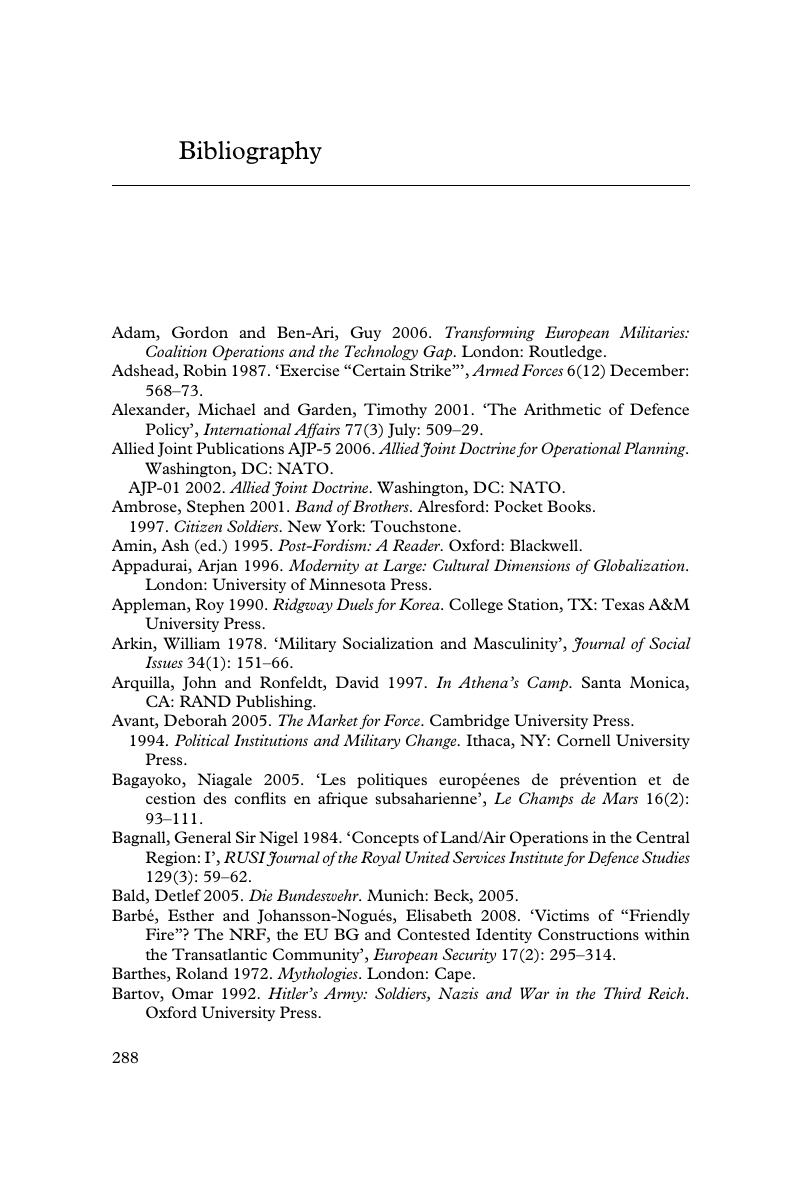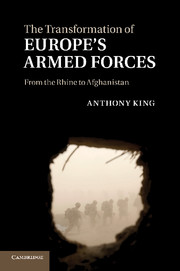Bibliography
Published online by Cambridge University Press: 04 February 2011
Summary

- Type
- Chapter
- Information
- The Transformation of Europe's Armed ForcesFrom the Rhine to Afghanistan, pp. 288 - 303Publisher: Cambridge University PressPrint publication year: 2011



